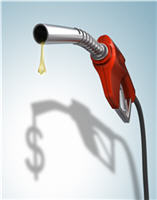
Fracking: Financial Fuel for America's Future
- By Jet Parker
- Jan 31, 2012
One of the most robust industries in the U.S. is driven by oil and gas production. A 2011 PricewaterhouseCoopers (PwC) report for the American Petroleum Institute noted that the oil and natural gas industry currently supplies more than 60 percent of the nation’s total energy demand, more than 99 percent of the fuel used by American vehicles, supports more than 9.2 million jobs, and contributes to 7.5 percent of the U.S. gross domestic product.
So, why is an industry so critical to our future and our economy at odds with environmental groups?
There are various reasons. No single answer will resolve the problem. However, using an environmentally friendly chemical may change how consumers, political leaders and environmentalists view one sector of the industry: hydraulic fracturing, or, fracking. In an effort to discern fracking fact from fracking sensationalism, oil and natural gas leaders must band together for the future of energy and apply environmentally friendly chemicals to the hydraulic fracturing process.
What is fracking? Essentially, it is the process of injecting sand and a chemical mix under high pressure through well pipelines to creature fractures in shale that will release natural gas reserves that otherwise would be difficult to extract. The chemicals used during this process are primarily needed to kill the bacteria and control the growth of odor and slime-producing microorganisms that clog the frac spaces and hinder the flow of gas or oil. Additionally, the product reduces the sessile bacteria that can degrade or corrode pipelines.
Concerns about fracking primarily revolve around the biocides used in the process and their impact on area water, land, crops and local populations. This is especially true in regards to well operations that may have experienced chemical spills, well blowouts, leaking wells and other accidents that result in the release of fracking chemicals.
Fracking is important to consumers, not just well operators. According to a 2004 independent National Association of Corrosion Engineers report, the cost of the bacteria results in losses totaling tens of millions of dollars per event and an estimated $100 million-plus annually to the industry. These costs eventually impact the consumer at the pump. Further, developing shale gas improves the economy thus the consumers’ ability to pay for fuel at the pump. A December 2011 PwC report noted that shale gas development through 2025 would significantly impact U.S. manufacturing and chemical industries by them to lower natural gas expenses by as much as $11.6 billion, to drive demand for their products and to help them employ approximately one million more workers.
Instead of attacking the fracking industry, Elite Fluids Recycling (EFR) and Integrity Industries collaborated to attack the problem. Their solution is a fracking fluid called SteriFrac. It is a 100 percent green, pH neutral biocide that is non-combustible, non-flammable and non-corrosive; thus, making it safe for groundwater, land and workers using the solution during the fracking process.
What makes SteriFrac effective and safe is that it essentially mimics a natural, bacteria-killing biocide (hypochlorous acid) found in the human body. To clarify, when we cut our finger and it becomes infected due to the spread of bacteria within the cut, our white blood cells release neutrophils to the infected area. The neutrophils then release hypochlorous acid (HCLO), a body-generated bacteria killer. SteriFrac is essentially a manmade, concentrated version of HCLO so it is 100 percent green, lethal to bacteria.
The EPA and FDA approved SteriFrac for use as an effective, eco-friendly biocide. In fact, the EPA’s stringent evaluation of the product resulted in a toxicity rating that is so low (essentially below the best rating of IV) that no requirement was implemented to include toxicity information on the label. SteriFrac is an eco-friendly alternative during the hydraulic fracturing process, the product is also ideal for treating sour wells, flood injection water, water-treatment plants and gas storage wells to control the production of microorganisms that produce odors and slime. Oil and gas companies in three states are applying SteriFrac as a fracking biocide that will protect area water supplies, too.
Resolving the conflict associated with hydraulic fracturing in America is not just a sound environmental decision, it is an economically critical one. While oil and gas operators are threatened to reduce production or in some cases, shut down, demand is still on the rise. The answer isn’t cutting off our energy sources; it is running them smarter; operating them in a fashion that is environmentally sound.
About the Author
Jet Parker is the chief visionary officer at Platinum Rainmakers, Inc.